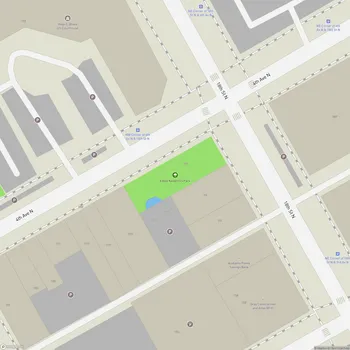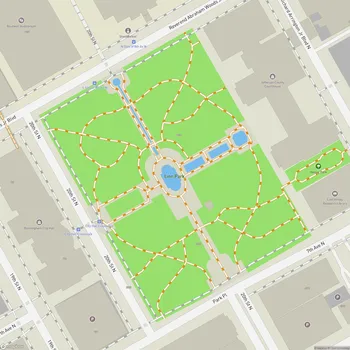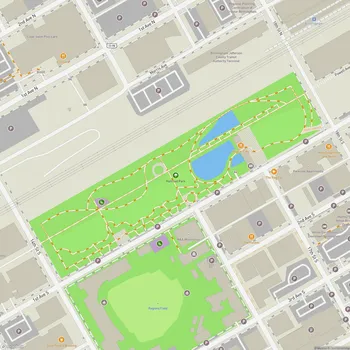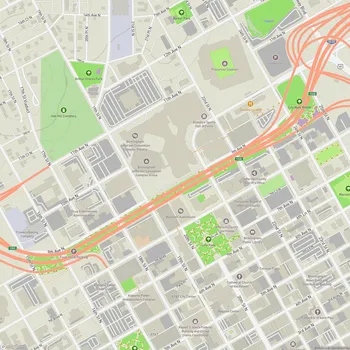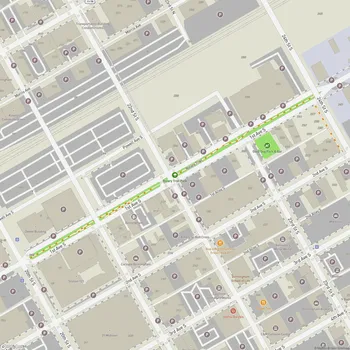Kelly Ingram Park
Kelly Ingram Park Map
About Kelly Ingram Park in Birmingham
Kelly Ingram Park is a historic 4-acre park located in Birmingham, Alabama, bounded by 16th and 17th Streets and 5th and 6th Avenues North in the Birmingham Civil Rights District. Originally known as West Park, it was renamed in 1932 to honor Osmond Kelly Ingram, the first American sailor killed in World War I.
The park played a crucial role in the Civil Rights Movement of the 1960s, serving as a central staging ground for large-scale demonstrations. It was here, in May 1963, that Birmingham police and firemen, under orders from Public Safety Commissioner Eugene "Bull" Connor, confronted peaceful demonstrators, many of them children, with police dogs and high-pressure fire hoses. These confrontations, captured in photographs and broadcast internationally, helped turn the nation's attention to the struggle for racial equality.
In 1992, Kelly Ingram Park was renovated and rededicated as "A Place of Revolution and Reconciliation." The park now features several sculptures and monuments commemorating the Civil Rights Movement. These include a central fountain, a statue of Dr. Martin Luther King Jr., and three powerful installations by artist James Drake along a circular "Freedom Walk." These sculptures bring visitors face-to-face with the terror and sorrow of the 1963 confrontations.
Other notable monuments in the park include the "Four Spirits" sculpture by Elizabeth MacQueen, honoring the four young girls killed in the 16th Street Baptist Church bombing, and statues commemorating other civil rights figures and "foot soldiers" of the movement. The park also contains interpretive signage providing historical context for visitors.
Today, Kelly Ingram Park serves as a place of remembrance and reflection, hosting various community events throughout the year. Its location across from the Birmingham Civil Rights Institute and the historic 16th Street Baptist Church makes it a key component of Birmingham's Civil Rights District. The park was listed in the National Register of Historic Places in 1984 and is part of the Birmingham Civil Rights National Monument, established in 2017.
